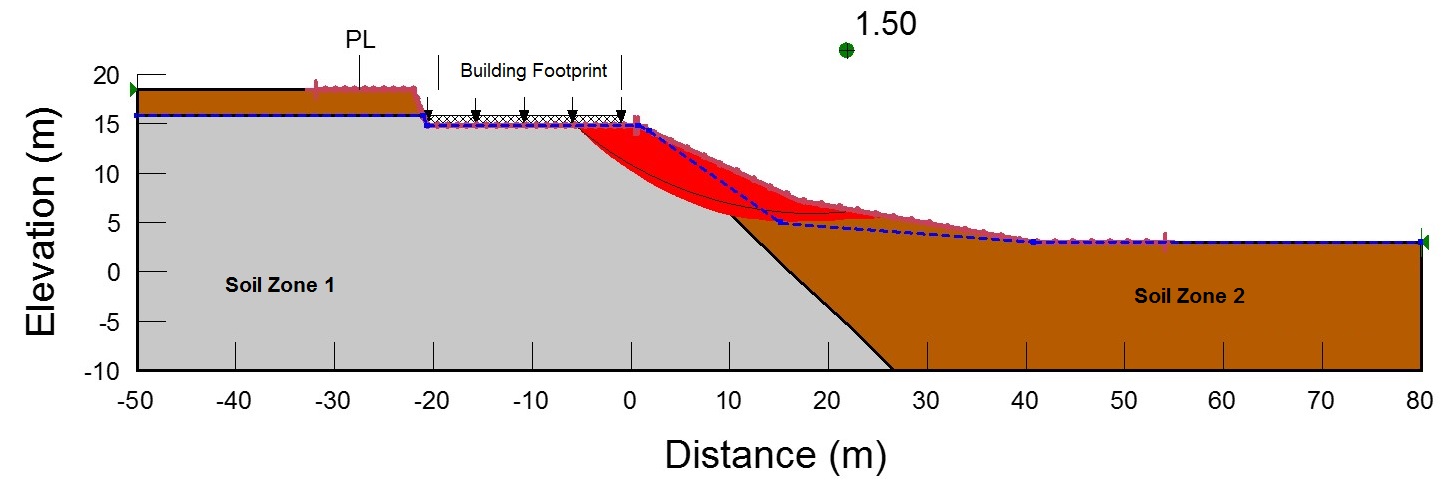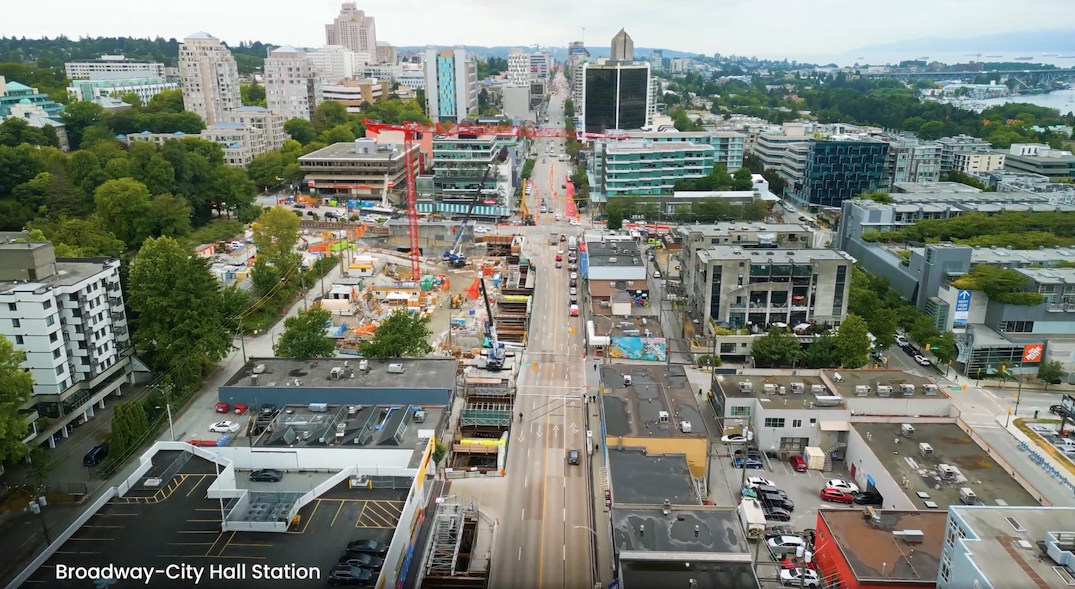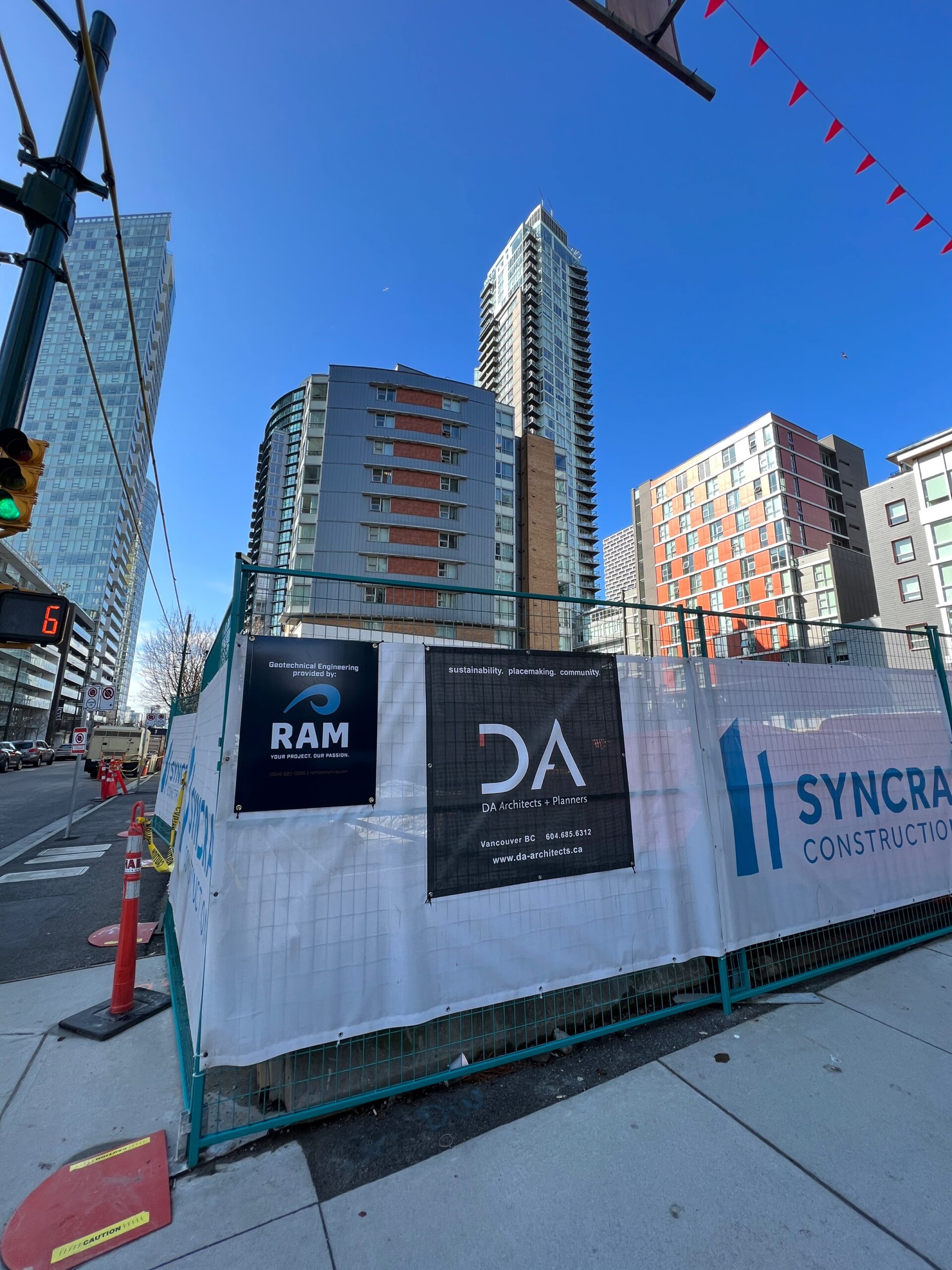Geotechnical Engineering
Over 25 years of geotechnical engineering over 5000 projects across Western Canada.
Geotechnical Services
RAM’s Geotechnical Engineering team has provided services for over 5000 projects. We provide a full range of geotechnical consulting services to our clients. Areas of expertise include subsurface investigation and characterization, site specific seismic ground response assessment, liquefaction potential assessment, foundation selection and design (e.g. soft soils, pile foundation, etc.), slope hazard assessment, and slope retention design.
Preparation of Erosion and Sediment Control (ESC) drawings is a part of most of our excavation projects. RAM has a Certified Erosion & Sediment Control Lead (BC-CESCL) technician who conducts construction field reviews concerning ESC.
- Select a service below:
RAM has experience with the following types of subsurface investigative equipment and will mobilize that which we believe will yield the most relevant information for design of a particular development in the context of its geologic setting:
- Backhoe / excavator test pitting
- Shovel / hand auger test pitting
- Auger drilling and sampling
- Mud-rotary drilling and sampling
- Sonic drilling and sampling
- Odex drilling and sampling
- Becker / environmental hammer drilling and testing
- Falling Head and Constant Head percolation testing
- Standpipe piezometer / inclinometer installation
- Wildcat penetrometer testing
- DCPT and SPT testing
- Down-hole seismic shear wave velocity measurements
- Cone Penetration Testing (CPT); we own and operate a high quality AP Van Den Berg cone
- Soil resistivity testing
Following a site investigation, a geotechnical report will typically be prepared which summarizes the site conditions, subsurface soil and groundwater conditions, and results of any engineering analyses. In addition, the geotechnical report will typically provide recommendations for the following, as required:
- Foundation design (bearing capacity, site class for seismic design, settlement estimate, frost depth, etc.)
- Earth pressures (static, seismic, compaction, and surcharge effects)
- Slope retention, excavation slopes, and shoring requirements
- Pavement design
- Engineered Fill material specification and placement
- Subgrade improvement and specialized foundations
- Drainage, including groundwater control and stormwater management
- Buried utilities
- Construction considerations
The professional experience and skills of our engineers enable us to perform a variety of engineering analyses, from simple settlement and bearing capacity analyses to complicated numerical analysis for modelling soil-structure interaction. The following summarizes the types of engineering analyses offered in-house:
Design Analysis
- Shallow and deep foundation (pile) design, such as timber piles, steel driven piles, drilled shafts, micropiles, and helical piles
- Excavation shoring and underpinning design (temporary and permanent)
- Pile lateral response analysis
- Stormwater management system design
- Slope hazard assessment, including slope stability and landslide runout analyses
- Retaining wall design, including global, sliding, overturning and internal stability assessment of segmental (MSE), concrete wall, permanent tied back shoring, and geogrid-reinforced solutions
- Erosion and sediment control (ESC) design
- Groundwater seepage analysis
- Rock slope stability analysis
Seismic Analysis
- Preparation of site-specific ground response spectra
- Soil liquefaction triggering analysis
- Seismic anchor design
- Post seismic ground stability
Ground Improvement
- Soil-cement mixing and cutter soil mixing (CSM)
- Stone columns
- Pre-loading
- Cut off walls / ground improvement for foundations and shoring
- CIP caissons
- Dewatering, designed as construction systems for projects
- Instrumentation design for monitoring projects
Analyses of slope stability is a routine part of our work. Following field investigation and / or site reconnaissance, a 2-dimensional model of the slope representing subsurface soil layers and groundwater conditions is made to allow an assessment of the global stability of the site, typically manifested as “Factor of Safety”. When modelling the slope, surcharges such as buildings, roads and parking lots, as well as tension cracks or previous failures will be incorporated into the model.

We provide slope stability assessment and retention design services. Many jurisdictions enforce specific guidelines and regulations for assessment of slopes and design of retention systems in residential areas. RAM is familiar with these types of projects and we routinely conduct slope assessments and design retaining wall systems.
Excavation shoring is typically required to retain soils adjacent to deep excavations to either facilitate new construction or other earth retention applications and to provide a safe work environment for construction crews. RAM has significant experience in the design and construction field review of the following types of shoring systems which are the most common in the Lower Mainland:
- Tie-back soil anchors with shotcrete panels (including underpinning, lift-off test, proof and performance testing)
- Lock Block retaining walls
- Shallow soil mixing (SSM) and Cutter Soil Mixing (CSM)
- Jet grouting
- CIP Caissons
- Dewatering
Preparation of Erosion and Sediment Control (ESC) drawings is a part of most of our excavation projects. RAM has a Certified Erosion & Sediment Control Lead (BC-CESCL) technician who conducts construction field reviews concerning ESC.
RAM has been actively involved in design and construction of many stormwater management design projects specifically for residential properties. A typical design would include in-ground, infiltration or detention systems combined with control sumps, rain gardens, and other water dispersion facilities. RAM has designed more than 100 of such projects, ranging from single-family houses to multi-family residential developments.
RAM has combined geotechnical engineering expertise with innovative civil engineering design approaches to provide efficient, maintainable systems with reliable long-term performance.
Materials Testing
- Wildcat Penetrometer
- Compaction Field Density Testing
- Cone Penetration Testing
- Standard and Modified Proctor Tests
- Atterberg Limits Testing
- Sieve Analysis (gradation testing)
- Moisture Content Testing
- Soil Resistivity Testing
- Unconfined Compressive Strength Testing
- Percolation Testing
- Total Suspended Solid Testing
This testing augments the geotechnical field review services provided during construction to satisfy the requirements of the BC Building Code Letters of Assurance Program. As of the proclamation of the 1992 Edition of the British Columbia Building Code, letters of assurance have been introduced to delineate areas of professional responsibility for design and Field Reviews for conformance with Building Code requirements or good engineering practice.
Monitoring
- Vibration Monitoring (e.g. during pile installation or rock blasting)
- Settlement Monitoring (e.g. preloading embankments or structures)
- Monitoring Structure By Installation of Tell-Tale Monitors on Walls and Structural Elements
- Horizontal & Vertical Inclinometer Systems
In accordance with the British Columbia Building Code 2018 Letters of Assurance program, the Geotechnical Engineer of Record is obligated to carry out field reviews in order to verify that construction is in general conformance with design and actual conditions encountered during construction are consistent with design assumptions. Field reviews are typically carried out by RAM, as required to confirm:
Geotechnical – Temporary
7.2 Shoring
7.3 Underpinning
7.4 Temporary construction dewatering
Geotechnical – Permanent
8.2 Geotechnical aspects of deep foundations
8.3 Compaction of engineered fill (if required)
8.4 Structural considerations of soil, including slope stability and seismic loading
8.5 Backfill
8.6 Permanent dewatering

Ting You Koh
Geotechnical Business Manager
Contact us to discuss how our Geotechnical Engineering services can add value, mitigate risk, and offer cost-effective solutions to your project.
Have more questions?
See What's New
Explore groundbreaking projects, innovative solutions, and expert analyses directly from our team of specialists.
Shape the Future with Us
Find out how you can contribute to groundbreaking projects that push the boundaries of innovation.





